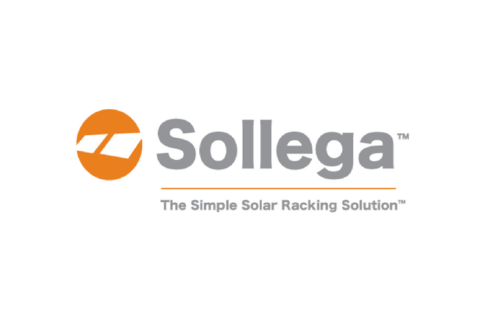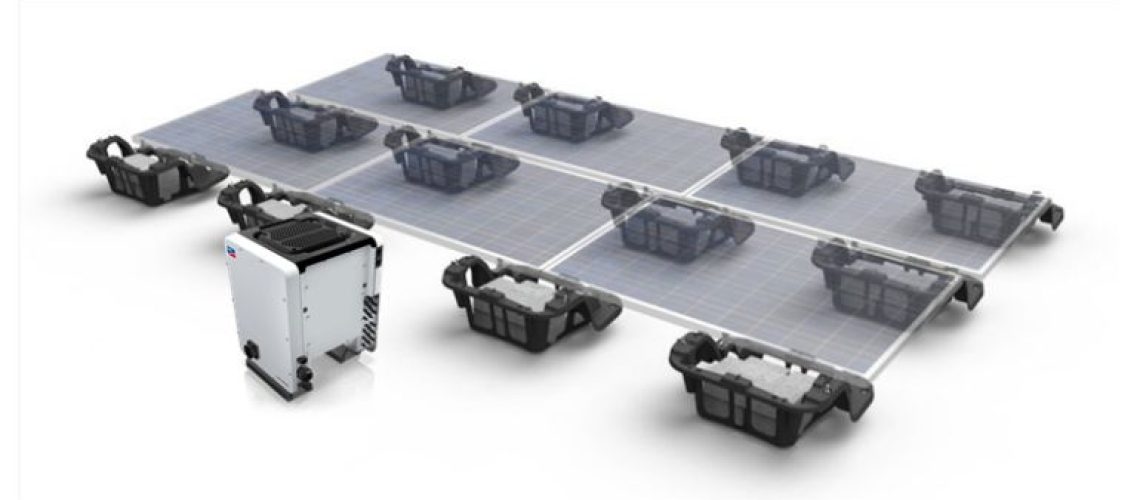In this episode of Solar Spotlight, we’re joined by Elie Rothschild, sales manager of Sollega, a racking manufacturer producing polymer-based supports for commercial rooftop and ground-mount solar projects. We’re discussing the latest developments at the company, including how Sollega’s racking can be used on projects without requiring module-level power electronics. Sollega will be exhibiting at RE+ this year at booth #3847.
Below is a portion of Sollega’s Solar Spotlight podcast with Solar Power World, but be sure to listen to the full episode on your favorite podcast app.
What makes Sollega different from your competition in terms of installation and adaptability to flat roofs?
We’ve always approached mounting panels a little differently than our competitors. We were really the first to use polymer for mounting solar panels in the U.S. We started back in 2010, and we always thought that polymer was the right material for mounting solar panels for a number of reasons. If you look at commercial roofs — TPO, PVC — those are all polymer membranes. There’s a reason they use that. It’s very durable and it last a long time.
We injection mold our racking here in the U.S., in California, actually, and it’s a one-piece unit. The benefit of injection molding is you can design and engineer in all the features. With our racking, there is no assembly. They literally unstack the buckets, put them down on the roof and start installing solar panels. It’s very quick, very efficient and that also enables our clients to install as you go rather than laying out and assembling all the racking first on the roof. There are little placement tabs on the buckets that allow you to install the panels and it provides the spacing, and they build it out as you go sort of assembly line process.
Sollega recently partnered with SMA to be the first flat roof racking manufacturer to achieve UL3741 for PV Hazard Control. Can you talk about that process and what the implications are for installers and the industry?
We’re very excited to have the opportunity to work with SMA. As you know, they’re one of the leading inverter manufacturers in the world. UL 3741 has been something that’s been in the code, and we took advantage of a section of that called “PV Hazard Control.” There’s really three ways of obtaining rapid shutdown in the code. One is the use of MLPEs (module-level power electronics), which is pretty much what the industry has been doing. Two is to have no metal in the system at all — nothing that’s conductive, like a BIPV (building-integrated photovoltaic) system. And three is what’s called PV Hazard Control.
So, we tested all of that with SMA’s [Sunny Tripower] Core 1 Inverter, our racking and a number of modules and we passed. There are a few different reasons we pass. Number one, our racking being polymer, it’s non-conductive, it’s safer. If an installer is touching our racking, there’s no potential for them to be energized. Two, and this is something we didn’t necessarily anticipate, but our racking in its inherent design actually works like a shock absorber. The impact was reduced and the breakage on the module was reduced because our racking actually absorbs some of that impact. That combination was really what enabled us to pass.
With the passage of the Inflation Reduction Act, what do you expect in terms of product demand, what is Sollega doing to meet those demand needs?
I think it’s been a really great boon for the industry. We’re definitely seeing increased interest in demand. We anticipated more demand a while back. We actually just added a second injection tool to our factory, so we doubled our manufacturing capacity and we’re expecting to see more and more C&I. It’s really one of the most untapped opportunities for PV in the U.S. currently. It’s a lot of available real estate out there. We’ve been shipping to all 50 states. We do projects in Hawaii, we do projects in the Caribbean, Puerto Rico, the Northeast.
Being that our racking is polymer, it’s glass-reinforced nylon, it’s very well suited for any type of high-corrosion environments. We do a number of projects in Hawaii, ground mounts and roof mounts, and projects down in any areas that are close to the ocean where you’re getting high salt spray, we’re very well-suited for. The hardware that we use on our racking is stainless 304 or stainless 316. We have those two options available.
This podcast is sponsored by Sollega




